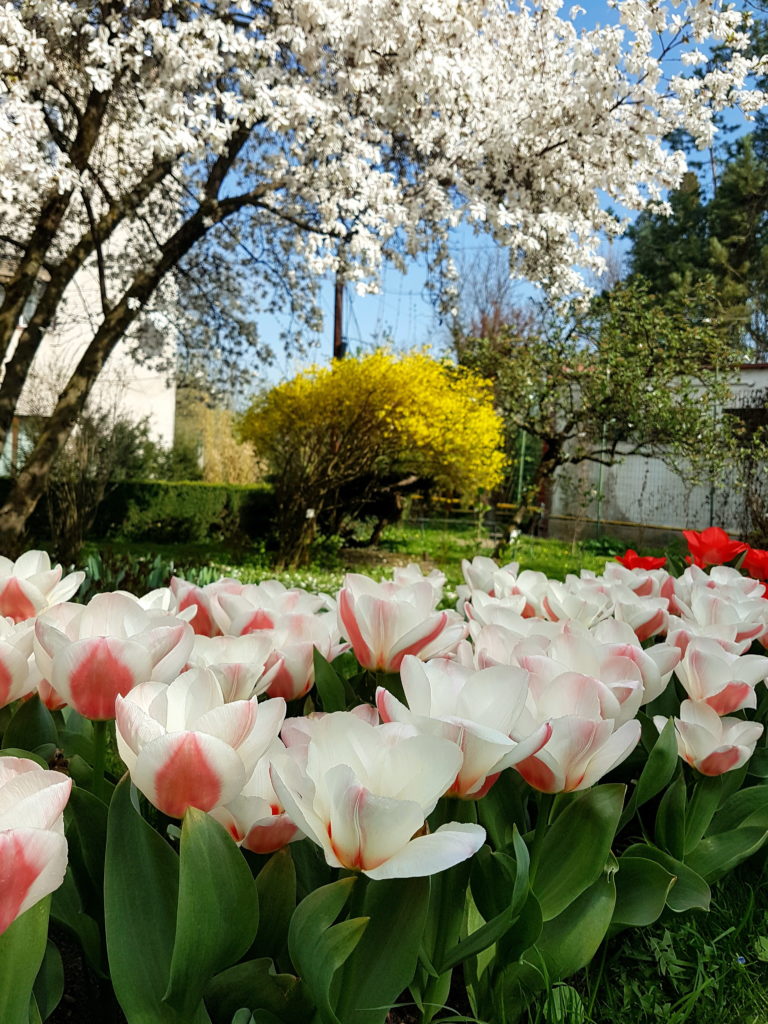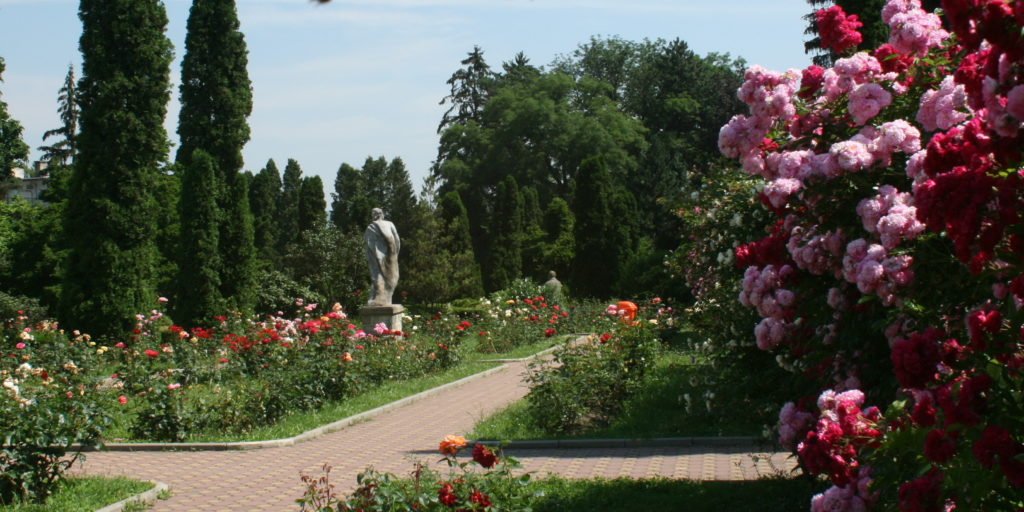The Ornamental Sector

The Ornamental Sector covers about one hectare, stretching from the main entrance of the botanic garden to the production greenhouses. It contains collections of horticultural (annual & perennial species), as well as botanic species cultivated for decorative purposes. The multitude of species and cultivars ensure a gradual flowering throughout the season, thus yielding a permanent “living exhibition”. The main cultivated plant types are:
Bulb species and biennial plants planted in the autumn: tulips, daffodils, hyacinths, ornamental onions (Allium), crocuses (Crocus), but also pansies, forget-me-nots, common daisies, etc.

Perennial and annual plant species planted in the spring: dahlias, rightfully called ‘Queen of the autumn flowers’, is present, every year, with approx. 100 cultivars, the canna lily collection (Canna), with a long tradition, cultivated since the establishment of the garden, lilies, sword-lilies, but also an impressive collection of annual ornamental plants (around 160 species and horticultural varieties), originating from all the continents. Two pyramid-shaped groups are displayed on both sides of the main path, beautifully crafted by our landscape architect in geometric patterns and other artistic compositions created by mosaic plants.
The three ornamental rockeries at the end of the main path display many species of horticultural and botanic plants growing in alpine and rockery gardens. Some of the species growing here are bellflowers (Campanula rotundifolia, C. porscharskiana, C. persicifolia), anemones (Anemone transsilvanica, A. ranunculoides, A. scabiosa), gentians (Gentiana lutea or the great yellow gentian, which was declared a natural monument, G. cruciata, G. asclepiadea), many species and varieties of Sedum, mini carnations, phlox, but also the charming flower of Edelweiss (Leontopodium alpinum), etc.

The rosarium, located in front of the Botanic Institute, includes a collection of Hybrid Tea, Floribunda, Polyantha, ascending, ground cover, miniature and English roses. Besides popular varieties, such as ‘Double Delight’, ‘Ingrid Bergman’, ‘Sutter’s Gold’, ‘Campfire’, etc., the collection periodically adds native and foreign varieties. In 2013, a mini-collection of hybrids was created in Cluj-Napoca, containing the ‘Wagner’s Favorite’ variety of the renowned breeder Ștefan Wagner, a true ‘parent of roses’. In 2014, a mini-collection of 22 varieties of English roses was also established. Besides older or newer varieties in the group of modern roses, there are also species and their horticultural varieties as ancestors, from which classical roses were derived: Rosa gallica ‘Officinalis’ – Old Rose, Rosa damascena ‘Triginipetala’ – Damask rose, Rosa alba ‘Amelia’, Rosa rugosa, etc.

The decorative aspect of the sector is complemented by magnolias, in a burst of spring flowers and other flowering shrubs (Hibiscus syriacus, Prunus laurocerasus, Viburnum carlesii, with particularly fragrant flowers), columnar thujas and various shapes of Buxus sempervirens.